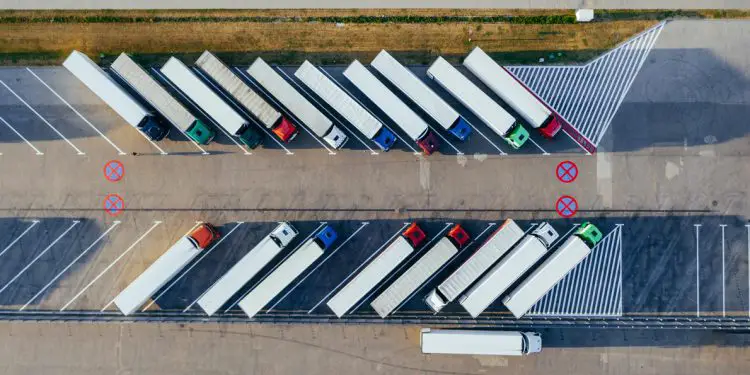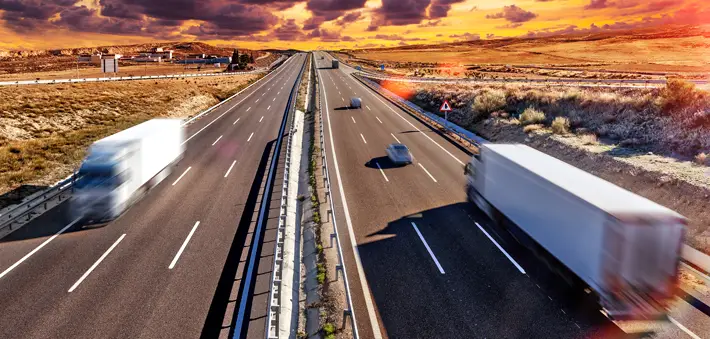How an Integrated Fleet Management Solution can Improve Overall Efficiency and Driver Safety

Deciding on how to approach running fleet operations so that they’re optimised can be tricky, yet it is one of the most important decisions a fleet manager must make. Choosing the right transport and logistic solution will work to increase productivity, vehicle and driver safety, and reduce overall fleet costs.
For this article we’ve teamed up with the fleet management specialists over at MICHELIN Connected Fleet to explain why you should use an integrated, holistic solution and how it can make significant improvements to your fleet’s overall performance.
The Difference Between Telematics and Fleet Management Software
As the fleet management industry continues to grow so does the necessity to employ tools which easily allow for real-time feedback and analysis. A fleet manager must always be informed on important details such as fuel consumption, associated cost, vehicle and weather conditions, as well as driver behaviour and health. They must then be able to respond to this data appropriately by managing the drivers, their compliance to health & safety regulations, and have the ability to plan and alter routes while also providing means of vehicle maintenance. Fulfilling this criteria of fleet management is essential to reaching optimal operational efficiency.
Today, the latter is achieved through the use of telematics and GPS tracking devices alongside fleet management software. But even now companies don’t understand the key distinctions between the two and may opt to use one over the other instead of realising their separateness and the potential synergy they hold.
Telematics and GPS Tracking Systems
Simply put, telematics devices track and report information about individual vehicles in a fleet. These typically come in the form of a GPS tracking device, commonly referred to as a black box, which is installed inside the vehicle itself.
Once installed, these devices then record and report data that characterises a driver’s behaviour to HQ via satellites. What is tracked generally consists of vehicle location, speed and condition, how much fuel is being used per mile, the rate of fuel consumption, load weight, breaking intensity, and if the vehicle’s panic signal has been used.
This data informs the fleet manager of how the driver’s driving style is typified, their task progress, as well as the route they are taking and whether they need assistance in real-time, as relayed through company servers. Consequently, what is being monitored affords the fleet manager the ability to let individual drivers know if they are braking/accelerating inefficiently or taking a suboptimal route while providing valuable information. For the driver to adjust their behaviour according to feedback directly results in reduced fuel consumption and CO2 emissions which ultimately reduces overall fleet costs. On top of this, the driver is assured that they’ll know if anything goes awry with their vehicle.
The impressive degree of visibility that telematics provides in regard to both ends of the fleet is vital to sound functionality and driver safety. As useful as it is, however, it only provides a limited range of data.
Fleet Management Software
Whereas telematics is concerned with real-time tracking, fleet management software is a database-centred statistical mode. Fleet management systems aggregate all the individual points of data reception, i.e., each vehicle, throughout a fleet as a whole. The information that is garnered is then stored so as to create a record of all the data that’s considered to be pertinent. Among others, this may comprise of vehicle ordering, vehicle specifications, maintenance history, service scheduling, transaction reports, operating expenses, regulatory compliance, and driver profiles.
The database is not a standard storage vault either, it is multi-purpose in that it has technical capabilities such as analytics reporting and diagnostics with further alert and emailing functionality. In essence, fleet management software covers administrative duties and processes which goes towards making it a lot easier for the fleet manager to carry out their role. They even have integration abilities which unlocks the opportunity for financial and ERP solutions to be put in place.
Fundamentally, fleet management systems afford a total view of the fleet from a facts and figures perspective. This opens the way for the fleet manager to be able to make decisions which are relative to the full-scale operation, contrasting with how telematics provide an individualistic outlook. Ultimately, each tool has a separate basis and fulfils fleet responsibilities than the other cannot.
Integrated Fleet Solutions
Given that both are indispensable, then, the obvious resolution is to merge them into a single, unified system. This is what’s known as an integrated fleet solution and is where both systems are employed collectively so that they work together, thereby utilising every facet of fleet management that’s available.
The benefits of an integrated fleet solution are fairly evident since you are naturally getting a fully comprehensive system with which to work, thus making life as a fleet manager easier, more efficient, and more productive.
The results of having a streamlined and synergetic system such as this wherein the metrics of telematics combine with fleet management software include:
• Reduction of fuel costs due to poor driving behaviour
• Increased driver proficiency and safety from real-time alerts
• An in-depth understanding of fleet history
• Evasion of breakdowns and unnecessary downtime due to monitoring
• Efficient planning based on regulatory compliance, vehicle location and destination
• Real-time access to dashboards and KPI reports
• Improved and thorough analytics, logistics, and diagnostics
• Access to historical reports for specific drivers and vehicles
• Real-time route adjustment
• Reduce investment and operating costs from IT and accounting sectors.
It’s fair to now conclude that telematics and fleet management software are two very distinct tools which, when integrated, produce a system that offers an enhanced standard of overall productivity, cost efficiency, and safety. We hope this article has helped you to understand how an integrated fleet management solution can improve your fleet’s overall performance and well-being. If, however, you have any more queries then the fleet management experts at Michelin Connected Fleet are always happy to help and even ready to provide a demo today right here.










